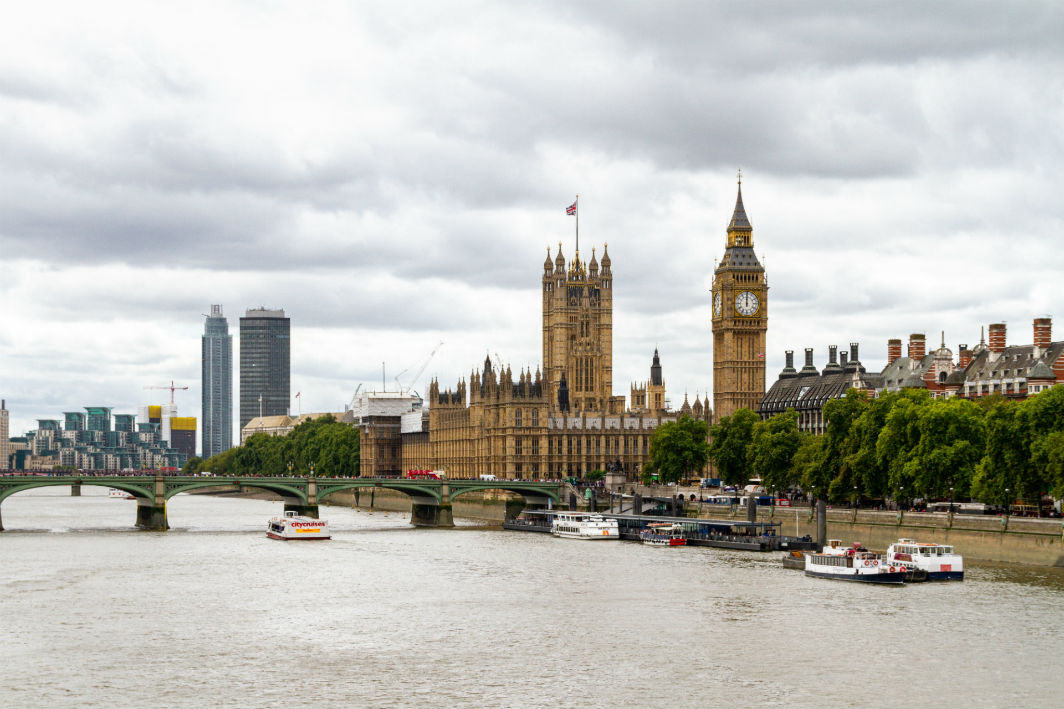Pre-budget analysis: 10 signs it’s a net zero budget
In the wake of catastrophic flooding and as we face the onset of coronavirus, it’s easy to forget that the UK Government still has another very urgent problem to work on: climate change. Last summer, the UK became the first major economy in the world to set itself a legally binding climate target when we committed to net zero emissions by 2050.
The Conservatives re-stated their commitment to the target in their manifesto before winning the December general election. Although new Chancellor Rishi Sunak has a lot on his plate, can he draw up a budget that meets the Conservatives’ green promises? And what are the top 10 things we would expect to see in such a budget?
1. Incentives for greener new-builds and retrofitting
The Conservatives’ winning manifesto promised: “We will help lower energy bills by investing £9.2 billion in the energy efficiency of homes, schools and hospitals.” It will be interesting to see how the first budget of their new term of government begins to allocate this promised spending.
Energy use within homes makes up about 14% of our greenhouse gas emissions. Last year, only 1% of new-build homes in the UK had an Energy Performance Certificate (EPC) rating of A, the most energy-efficient grading. The figure for existing homes was even worse: 0.1%.
A budget designed to reduce our emissions would be one that financially incentivises the construction industry to design and build much better insulated homes. More importantly, it would focus on incentives for improving the insulation and general energy efficiency of existing homes. The NHS currently spends billions each year on treating health problems caused by poorly insulated homes, so money spent on keeping us warmer would mean savings elsewhere.
A really ambitious green budget would also include a scheme for replacing many of the UK’s old gas boilers with heat pumps, but this would be expensive and we would expect other measures with a higher return on investment to be carried out first.
2. Action on vehicle emissions
Road transport makes up about 20% of our greenhouse gas emissions, and traffic volumes are increasing. The government’s decision to ban the sale of petrol and diesel cars from 2035 (bringing it forward from 2040) was an acknowledgement that we can’t get to net zero with business as usual on the roads. The new budget will probably include measures to lay the groundwork for the forthcoming ban: perhaps increased subsidies on the purchase of electric vehicles or investment in our currently inadequate network of electric vehicle charging points.
If the government is serious about reducing emissions from transport, we might also see a change in duty on petrol and diesel, which has been frozen since 2011 at a cost to the Treasury of billions of pounds. However, research has found this to be a politically unpopular move.
3. No major new roads
The government is likely to face a legal challenge over its plans to spend £28.8 billion on “strategic and local roads”, as promised in the Conservatives’ manifesto. Environmentalists are likely to argue that at least some road schemes should be rejected as inconsistent with the government’s own legally binding net zero target. The road-building scheme was assessed and given the go-ahead under the guidelines that were in place before the government committed to net zero by 2050, which means many parts of it are inconsistent with the current laws and guidelines.
A green budget would include a thorough reassessment of which new roads are actually necessary and consistent with meeting our target. The Conservatives’ manifesto made other, less glamorous commitments on roads, such as “the biggest ever pot-hole filling plan”. Focusing on the maintenance of existing roads would be popular and help towards our goal, as smoother road surfaces reduce vehicle emissions.
4. Funding for alternatives to driving
Another easy win in the transport sector would be increased funding for active travel. This is currently a tiny percentage of overall transport spending (estimated to be 5% in Wales, just over 2% in Scotland and only 1.5% in England). Active travel spending tends to pay for itself by encouraging healthier lifestyles and making places more attractive to tourists.
The pre-election manifesto promised a new “£350 million Cycling Infrastructure Fund” for England, which would go towards the creation of 250 miles of segregated cycle lanes across the country. That works out at just a few miles per local authority, which won’t make any difference to anyone’s travel habits. Cycling UK has calculated that to make a difference, the spending should be more like £6 billion.
Meanwhile, buses have been promised £5 billion and the manifesto makes exciting claims such as “superbus networks” and “the UK’s first all-electric-bus town”. It will be interesting to see how these plans are carried out and where the money goes.
The December manifesto didn’t mention walking at all, so it is likely that despite being much more common than cycling, this will remain a “Cinderella” transport mode with no special new funding.
5. Enabling new wind farms
The pre-election manifesto promises to “enable new floating wind farms” and reach an offshore wind capacity of 40GW by 2030. (The word “enabling” is used rather than “building” because all our offshore wind farms are developed and owned by private companies, who compete for government contracts.)
Current capacity is about 8.5GW, which is more than any other country in the world. If the wind farms currently under construction are completed and the space currently being auctioned is used to its full capacity, we stand a good chance of reaching the 40GW target by the 2030 deadline.
It’s not clear what this means in terms of budget commitments. The falling cost of producing energy from offshore wind means that the government is already paying less to subsidise this energy source than ever before.
Meanwhile, last week the government opened the fourth round of the Contracts for Difference scheme, which offers the developers of renewable energy projects a flat rate for their energy over a 15-year period. Onshore wind projects are included in the scheme, effectively reversing the government’s opposition to this source of clean energy.
6. Support for other renewables
Replacing the Feed-In Tariff with the Smart Export Guarantee (SEG) was one of many moves intended to signal that the government’s plan is to take a more market-led approach to supporting small scale renewables. It’s too early to tell what impact the switch to SEG will have on the number of solar (and other) installations being created. But we do know that in a recent survey, 71% of people said they would like to see the government do more to support clean energy, so new investment would be a politically popular move.
7. Helping us afford warmer homes
The December manifesto promised to keep the winter fuel payment, currently available to every household that includes someone over pension age, so it is likely that tomorrow’s budget will uphold this. (There were no such promises about cold weather payments, which go to poorer and more vulnerable people of working age.)
The winter fuel payment has come in for criticism, as a quarter of households receiving it have a combined wealth of over £100,000. However, some research suggests that the administrative costs of introducing means-testing would almost cancel out any savings made.
If the government tackled the energy efficiency improvements to UK buildings that are essential to reach net zero, this would reduce fuel poverty and reduce the necessity for the government to allocate help with fuel bills in future budgets. In the meantime, making the winter fuel payment taxable would be a progressive measure that involves less admin than means-testing.
8. Action to transition away from oil and gas
The pre-election manifesto made it clear that the Conservatives aren’t done with fossil fuels yet: “The oil and gas sector…has a long future ahead and a key role to play as we move to a net zero economy. We will support this transition in the next Parliament.”
Many UK workers depend on the oil and gas sector to make a living, so any transition has to be handled with a plan for how to reduce potential job losses. This may involve re-skilling workers for jobs in the renewable energy sector, but that would probably involve public investment in training.
9. Investment in carbon capture and storage
The Committee on Climate Change describes heavy investment in carbon capture and storage (CCS) as “a necessity, not an option” if we are to meet our 2050 deadline. Last year, Indian conglomerate Tata Chemicals announced that it would be converting an industrial site in Cheshire into the UK’s first industrial-scale CCS plant. This is expected to start next year and save up to 40,000 tonnes of carbon dioxide emissions a year.
The government has also given power company Drax a £5 million grant for its own CCS pilot scheme. But for the country to reach net zero, we need more than a couple of flagship schemes, so a truly green budget would announce significant subsidies for new CCS schemes.
10. No more funding for overseas oil schemes
The Prime Minister announced in January that British aid money will no longer be used to
finance coal plants and coal mines overseas. The move was intended to combat repeated criticism that the UK is “outsourcing” its emissions by supporting fossil fuel schemes overseas even as we work towards decarbonising here.
However, public money will still fund new oil and gas projects abroad. A budget that was serious about taking responsibility for all our emissions would announce an end to Official Development Assistance or export credit for any fossil fuel projects overseas.
We don’t yet know if the Chancellor’s first budget will take bold steps to meet our climate commitments or kick the tough decisions further down the road. Keep checking out the Energy Advice Hub for the latest updates and analysis.













